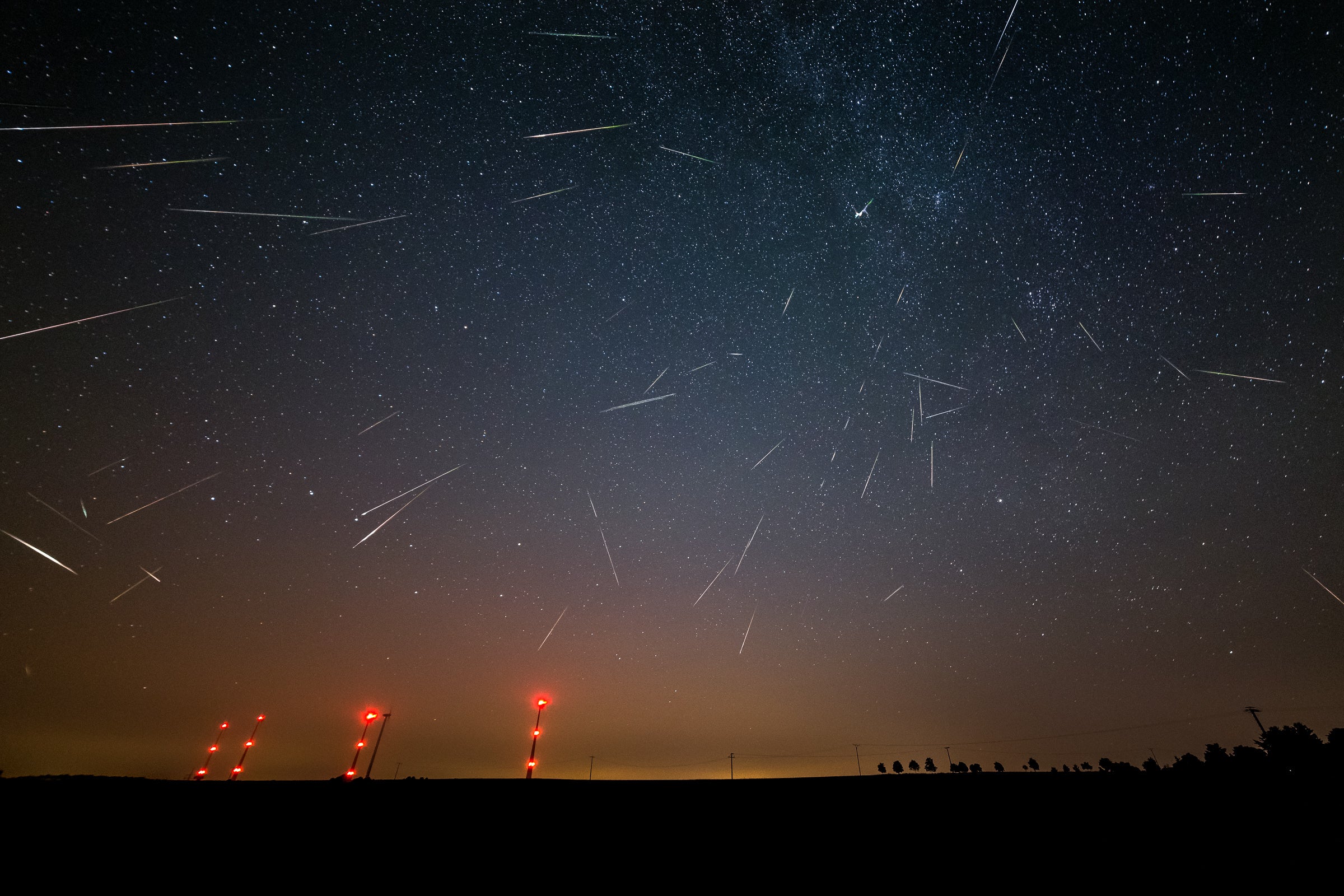Stargazing in August: St Lawrence’s flaming teardrops
If you go outside at night this month you’ll see the saint’s tears dropping down from the heavens as fiery streaks of light

It was a tough life being a Christian during the first few centuries of the new religion, as a young deacon called Lawrence found out the hard way. In August AD 258, the Roman Emperor Valerian ordered all the senior clergy to be put to death. After the execution of the Pope, Lawrence became responsible for the church’s treasury. Valerian commanded him to hand it over. Lawrence turned up with a group of poor and sick Christians declaring, “these are the wealth of the church”.
The emperor was not amused. He had the executioners light a bed of flaming coals, with Lawrence secured to a gridiron above. After suffering this torment for a while, legend recounts that Lawrence called out, “I’m done on this side; you can turn me over!”
The date of his martyrdom, 10 August, became St Lawrence’s Day. If you go out around then and watch the night sky for a few minutes you’ll see the saint’s tears dropping down from the heavens as fiery streaks of light at 130,000mph.
Astronomers have a more prosaic explanation for the shooting stars that grace our skies in August – though it would probably have seemed just as fantastical to scholars of St Lawrence’s time. These meteors are specks of dust that have been shed by a comet, burning up as they smash into Earth’s atmosphere.
This annual spectacle is called the Perseid meteor shower, as perspective makes the falling stars seem to stream outwards from a point in the constellation Perseus – the “radiant” marked in the chart. You don’t need to stare at this point to view the Perseids, though: they spread out in all directions and you’ll see meteors streaking across almost any part of the sky.
Our planet crosses this trail of debris from Comet Swift-Tuttle every year, making the Perseids an annual event. But often the moon is up in the sky at the time the meteors reach their maximum in mid-August and its light washes out the fainter shooting stars. We’re lucky this year because the moon sets by 10.30pm and we are treated to really dark conditions for observing the Perseids late at night.
In fact, the best view will come in the early hours of the morning, as the spinning Earth propels us towards the incoming specks of debris. As a result, we are treated to more, brighter meteors.
And why not use the occasion to celebrate? Throw a meteor party, with your friends reclining on loungers and viewing different parts of the sky. Call out “METEOR!” every time you see a shooting star, make a wish and raise a toast to the unfortunate Deacon of Rome.
What’s Up
In the evening twilight, look out for brilliant Venus above the horizon to the northwest. There’s a lovely sight on 10 and 11 August, when the crescent moon passes nearby. The fainter planets Mercury and Mars are hugging the horizon to the lower right of the Evening Star, though you’ll need binoculars to spot them in the bright dusk glow.
But you can’t miss the two largest planets of the solar system, down to the southeast. Jupiter shines far more brilliantly than any star, with Saturn running it a close second. Both worlds are closest to the Earth this month. On 2 August, we were a “mere” 830 million miles from Saturn, the most distant world that’s easily visible to the naked eye. Grab a telescope if you can, to view its gorgeous rings and its large companion Titan – the only moon in the solar system with a hefty atmosphere and clouds.

We make our nearest approach to Jupiter on 20 August. Even a pair of binoculars will show you its four major moons. They’re a weird bunch, ranging from Ganymede that’s bigger than the planet Mercury to Europa whose icy crust conceals an ocean that may be home to exotic alien life.
Above Jupiter and Saturn, three prominent stars mark the corners of the Summer Triangle. Almost overhead is Vega, a pure white star 25 light years away from us and 40 times brighter than our sun. At the lowest vertex lies Altair, a similar star that’s 17 light years distant. The third member of this celestial trio, though, is totally different. Deneb looks slightly fainter than the other two but that’s merely due to its immense distance. The light we see from Deneb has travelled 2,600 light years to reach our eyes, so it left Deneb at the time of the ancient Greek empire. To appear prominent in our skies, this star must be incredibly luminous – outshining our sun 200,000 times over.
Diary
8 August, 2.50 pm: New moon
9 August: Crescent moon near Mercury, Mars and Regulus
10 August: Moon between Venus and Mars
11 August: Moon near Venus
12/13 August: Maximum of Perseid meteor shower
15 August, 4.19 pm: First quarter moon
16 August: Moon near Antares
20 August: Moon near Saturn; Jupiter at opposition
21 August: Moon near Jupiter
22 August, 1.02 pm: Full moon near Jupiter
28 August: Moon near the Pleiades
29 August: Moon between the Pleiades and Aldebaran
30 August, 8.13 am: Last quarter moon near Aldebaran
Philip’s 2022 Stargazing (Philip’s £6.99) by Nigel Henbest is your guide to everything that’s going on in the sky next year
Join our commenting forum
Join thought-provoking conversations, follow other Independent readers and see their replies
Comments


Bookmark popover
Removed from bookmarks